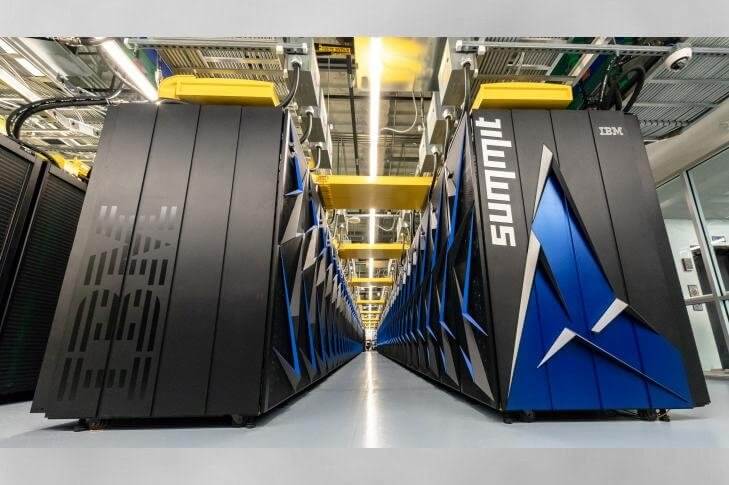Today, the U.S. Department of Energy’s Oak Ridge National Laboratory (ORNL) unveiled Summit as the world’s most powerful and smartest scientific supercomputer. Secretary of Energy Rick Perry attended the debut to meet with the ORNL team and see first-hand this monumental supercomputer.
With a peak performance of 200,000 trillion calculations per second—or 200 petaflops, Summit will be eight times more powerful than America’s current top-ranked system, Titan, which is also housed at ORNL. For certain scientific applications, Summit will also be capable of more than three billion-billion mixed precision calculations per second. Summit will provide unprecedented computing power for research in energy, advanced materials, and artificial intelligence (AI), among other domains. Summit will enable scientific discoveries that were previously impractical or impossible.
“Today’s launch of the Summit supercomputer demonstrates the strength of American leadership in scientific innovation and technology development. It’s going to have a profound impact in energy research, scientific discovery, economic competitiveness, and national security,” said Secretary Perry. “I am truly excited by the potential of Summit, as it moves the nation one step closer to the goal of delivering an exascale supercomputing system by 2021. Summit will empower scientists to address a wide range of new challenges, accelerate discovery, spur innovation, and above all, benefit the American people.”
Summit’s computing capacity is so powerful that it has the ability to compute 30 years’ worth of data saved on a desktop computer in just one hour. These capabilities mark a huge increase in computing efficiency that will revolutionize the future of American science. ORNL researchers have also figured out how to harness the power and intelligence of Summit’s state-of-art architecture to successfully run the world’s first exascale scientific calculation, or exaops, as DOE’s fleet of proposed exascale computing systems come online in the next five years.
“From its genesis 75 years ago, ORNL has a history and culture of solving large and difficult problems with national scope and impact,” said ORNL Director Thomas Zacharia. “ORNL scientists were among the scientific teams that achieved the first gigaflops calculations in 1988, the first teraflops calculations in 1998, the first petaflops calculations in 2008, and now the first exaops calculations in 2018. The pioneering research of ORNL scientists and engineers has played a pivotal role in our nation’s history and continues to shape our future. We look forward to welcoming the scientific user community to Summit as we pursue another 75 years of leadership in science.”
In addition to scientific modeling and simulation, Summit offers unparalleled opportunities for the integration of AI and scientific discovery, enabling researchers to apply techniques like machine learning and deep learning to problems in human health, high-energy physics, materials discovery and other areas. These opportunities that Summit will bring align with the White House Artificial Intelligence for America initiative announced last month.
Summit will be open to select projects this year while ORNL and IBM work through the acceptance process for the machine. In 2019, the bulk of access to the IBM system will go to research teams selected through DOE’s Innovative and Novel Computational Impact on Theory and Experiment (INCITE) program.
If our reporting has informed or inspired you, please consider making a donation. Every contribution, no matter the size, empowers us to continue delivering accurate, engaging, and trustworthy science and medical news. Independent journalism requires time, effort, and resources—your support ensures we can keep uncovering the stories that matter most to you.
Join us in making knowledge accessible and impactful. Thank you for standing with us!

